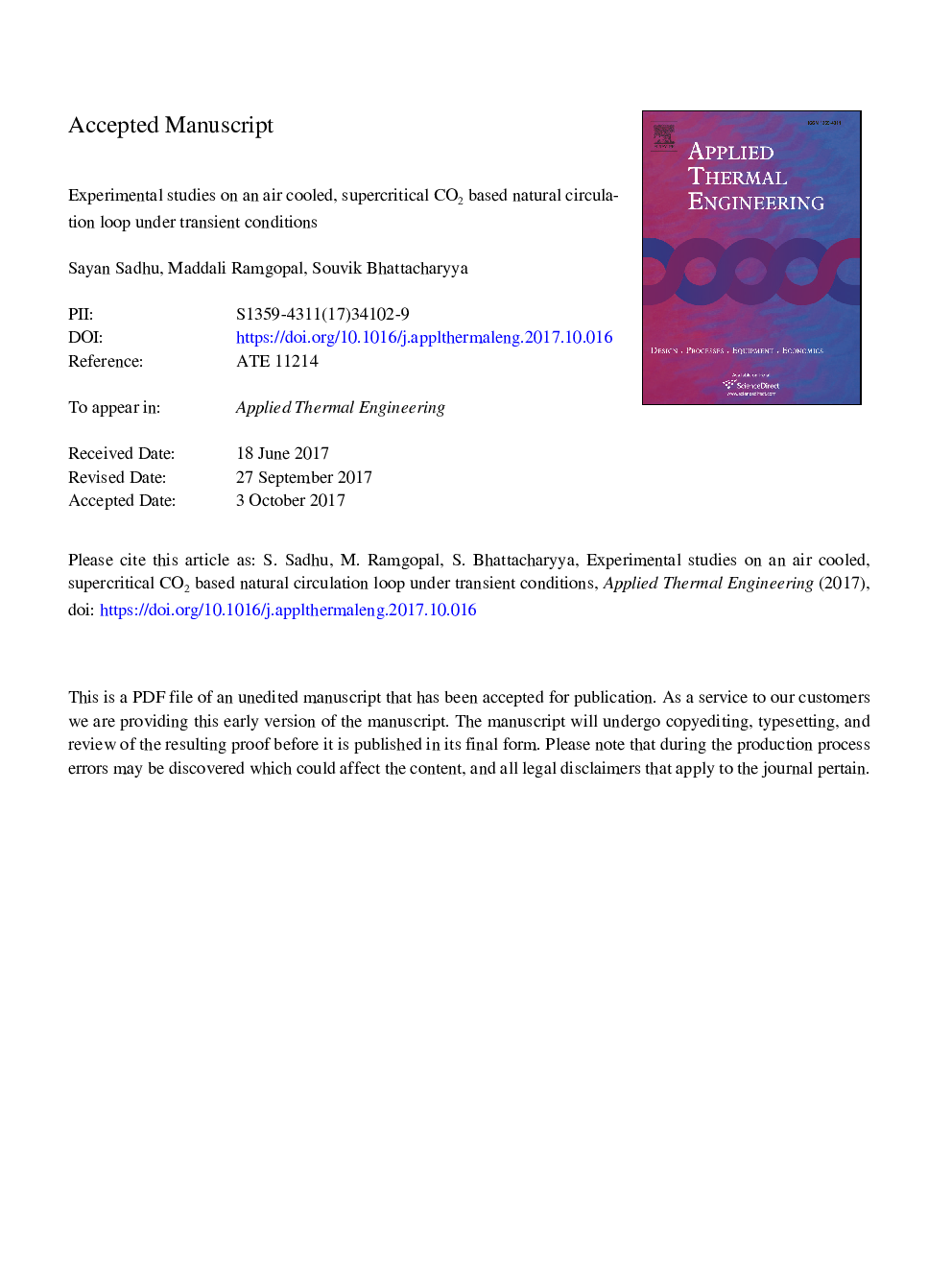| Article ID | Journal | Published Year | Pages | File Type |
|---|---|---|---|---|
| 7045995 | Applied Thermal Engineering | 2018 | 23 Pages |
Abstract
Experimental studies are carried out on a supercritical carbon dioxide based natural circulation loop (NCL) to investigate the loop behaviour under steady and transient conditions. The results obtained from steady state experiments are reported in Part A of this paper, while the transient study results are presented in this part. The test rig uses an electrical heater with controlled heat flux as heat source and an air-cooled fin & tube type heat exchanger with controlled inlet conditions as heat sink. Under transient studies, the start-up and shutdown processes are analysed with different heater power levels. Due to the unique properties of CO2, especially its low critical temperature (â31â¯Â°C), interesting results are obtained during the transient studies. It is seen that during shut-down, there is local condensation of CO2 at the outlet of the heat sink, leading to heating due to latent heat of condensation. It is observed that during fan failure there is sudden temperature and pressure rise, necessitating the need for protection against over temperature and pressure. A complete power failure study shows that there is a rise in pressure and temperature for a short duration followed by a slow cooling through natural convection heat loss to the ambient.
Keywords
Related Topics
Physical Sciences and Engineering
Chemical Engineering
Fluid Flow and Transfer Processes
Authors
Sayan Sadhu, Maddali Ramgopal, Souvik Bhattacharyya,
